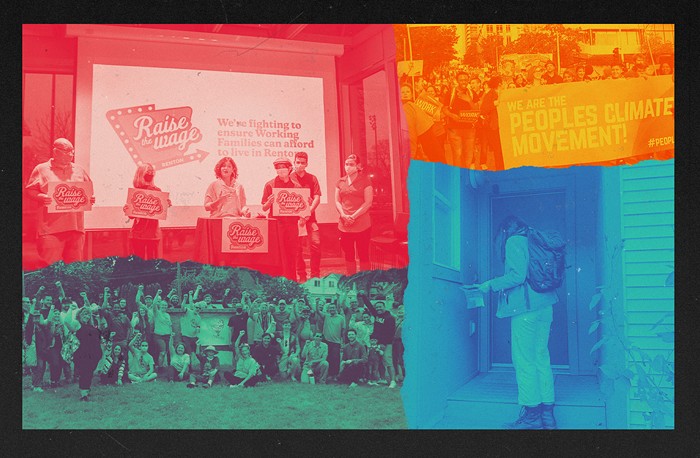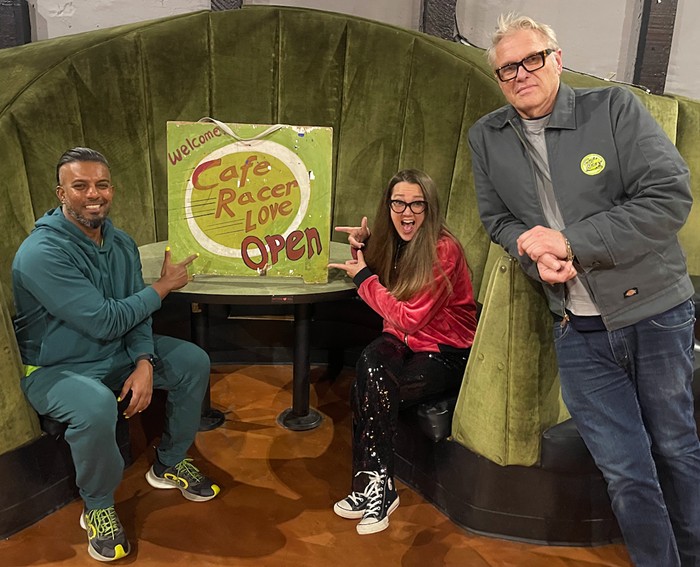As the opening date for light rail to Southeast Seattle (July 3, 2009) approaches, neighbors of the Othello Station in the Rainier Valley are buzzing about the big changes coming to the area.
While the arrival of light rail could bring a flurry of new stores and residents, many who live there are worried that one large, important business might be leaving before the first train rolls through Othello Station: Safeway, the only major grocery store serving the largely transit- and cab-dependent area. The next-closest stores are between two and three miles away.
Last Saturday, a handful of residents of the Othello neighborhood—between the South Beacon Hill and Dunlap neighborhoods—stood outside the Safeway on South Othello Street and Martin Luther King Jr. Way South collecting signatures on a petition opposing the potential closure. Since September 2008, Safeway has been looking to sell its Othello property, even creating a website last fall—since taken down—promoting the 56-year-old, 26,000-square-foot store as "an intriguing redevelopment opportunity in South Seattle." According to records at the King County Department of Assessments, the site remains unsold.
Othello residents also allege that Safeway is blocking the way for another grocery chain to take over the property. According to a deed restriction posted on the Othello Safeway website, whoever purchases the property would have to agree not to build a grocery store, pharmacy, or gas station at the site.
Othello resident Granger Michaelsen, who protested outside the Safeway on Saturday, said, "We're doing what we can to assure [people] that somehow, somewhere there's a full-service grocery store" in far Southeast Seattle.
Neighbors like Michaelsen say they want Safeway to upgrade the store, which they complain is understaffed, has flies in the produce section, and carries a greater selection of chips and beer than meat and fresh fruits and vegetables. "There's no pharmacy, there's no bakery, the produce is limited, and it's a small store," Michaelsen says. "It's one of the oldest Safeways in Seattle... [and it] served a different era. It certainly needs updating. We're living in a different age now."
Indeed, as Seattle continues to grow, many neighborhoods are becoming denser and more walkable. But while there are full-service grocery stores in South Seattle—soon to be a new hub of transit-oriented development—few of them are easy to get to without a car. Instead, lower-income South End residents must rely on understocked grocery stores and convenience stores.
In the meantime, grocery chains are bending over backward to please residents of more affluent neighborhoods. In the Pinehurst neighborhood in North Seattle, neighbors hollered about a lack of selection at their local Safeway. Now, the chain is looking to completely remodel the Pinehurst Safeway as a massive, "environmentally friendly" store. Similarly, the Safeway corporation is in the early stages of designing and building two massive stores in Mount Baker and Seward Park—two neighborhoods that are also wealthier and whiter than those in far Southeast Seattle.
"I think demographics drive their decisions," says Jenna Egusa Walden, chair of the Othello Neighborhood Association.
Egusa Walden says Safeway has told her the company isn't making enough money at the store to warrant a remodel. But because of the current state of the store, Othello residents are heading down to Rainier Beach or up to Genesee Park a few miles away to get their groceries at other Safeways. "They pretty much monopolize the major grocery [sales] in the area. It doesn't really give the community much leverage in the end."
Although the save-the-Safeway movement is growing louder, neighbors aren't necessarily wedded to the grocery behemoth. "I wouldn't say we're lobbying for a Safeway," Egusa Walden says. "We're lobbying for a grocery store, and they're the lowest-hanging fruit."
Safeway's corporate office did not return a call for comment. ![]()


















